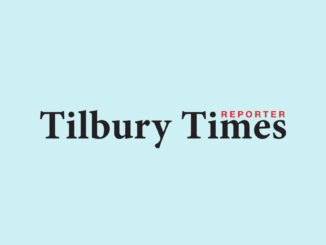
By Bird Bouchard, Local Journalism Initiative Reporter The Ridgetown Independent News
Ontario will begin easing restrictions at the end of the month.
Last week, Premier Doug Ford laid out a three-phase plan with at least 21 days between each stage. The announcement came just one day after Minister of Health Christine Elliott highlighted positive trends in the healthcare system, which signalled this latest phase would peak at the end of the month.
“We can be confident that the worst is behind us and that we are now in a position to cautiously and gradually ease public health measures,” said Ford. “While February will continue to present its own challenges, given current trends, these are challenges we are confident we can manage.”
Beginning January 31, all indoor public settings like restaurants, gyms, casinos, and retail establishments will be able to reopen at 50 percent capacity. Theatres, concert venues, and sports venues with spectators will also be allowed 50 percent capacity or 500 people, whichever is less. Higher risk settings such as nightclubs, wedding receptions in meeting or event spaces where there is dancing, and bathhouses and sex clubs will remain closed.
Additionally, social gatherings will be limited to 10 people indoors and 25 people outdoors. Proof of vaccination in these settings will still be required.
Ford added if positive trends continue and health system indicators remain stable, phase 2 of reopening will begin February 21. Social gathering limits will increase to 25 people indoors and 100 people outdoors.
This would see that all capacity limits will be lifted in indoor public settings where proof of vaccination is required. Spectator capacity at sporting events, concert venues, and theatres will be increased to 50 percent. Higher-risk indoor settings like nightclubs and wedding receptions will be allowed to operate at 25 percent capacity.
Furthermore, on March 14, capacity limits will be lifted at all indoor public settings. Proof of vaccination will still be required. Social gatherings will be limited to 50 people indoors with no limits outdoors.
The plan laid out by Ford and his team does not currently include when vaccination mandates are lifted for public settings. The plan also does not indicate when mask mandates will be lifted.
“We’re not out of the woods yet, but we’re taking a cautious approach to move forward, and I’m confident that we’re going to move forward cautiously and get things back to normal as quickly as possible,” said Ford.
Chatham-Kent’s Medical officer of Health said he has “full confidence” in the provincial plan to ease capacity limits at the end of the month.
Dr. David Colby said as long as healthcare systems are protected, he’s on board with the province’s decision. However, he admitted the plan could be derailed if things get worse and added the timeline could change if there were bumps in the road.
“Any timelines that are projected are based on extenuating circumstances. If our hospitals are overflowing and there isn’t capacity, this is not a rigid rollout schedule,” said Colby.
Meanwhile, the Chatham-Kent Health Alliance is reporting 31 COVID-19 patients in the hospital, adding 16 of them are being treated primarily for the virus while the others were admitted for other reasons and then tested positive for COVID-19. Hospital officials said 11 of the 16 are unvaccinated. They also report two unvaccinated COVID-19 patients are in the ICU.




Be the first to comment